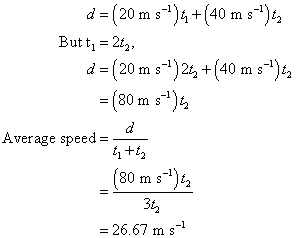Force is one of the most fundamental concepts of physics. The concept of force has formed part of statics and dynamics since ancient times. The modern concept of force is commonly explained in terms of Newton's three laws of motion set forth in his Principia Mathematica (1687).
What is force?
Force can be described as a push or pull. A force upon an object is always a result of interaction with another object. When we say an object is acted by a force, there must be another object applying a force to it.
Force is also a vector, that is, it has magnitude and direction. We can fully describe a force by saying how strong it is (its magnitude) and in which direction it is acting. The SI Unit for force is newton (named after none other than Isaac Newton) and its symbol is N.
Types of Force
Forces can be categorised into two broad categories:
- Contact forces are those types of forces which result when two interacting objects are perceived to be physically interacting with each other. Examples of contact forces include frictional forces, tensional forces and applied forces.
- Action-at-a-distance forces are those types of forces which result even when the two interacting objects are not in physical contact with each other, yet are able to exert a push or pull despite their physical separation. Gravitational forces, magnetic forces and electrical forces are examples of this type of force.
The Effects of Force
Basically, a net force that acts on an object will produce an acceleration. For example, by applying a force, a stationary object can be set in motion, whereas a moving object can be made to move faster or slower and/or change its direction of motion (since acceleration also involves direction). In short, a force can alter the state of motion of an object; this is described in Newton’s first law of motion. The relationship between force and acceleration is further described in Newton’s second law of motion.
More often than not, a force that acts on an object does not cause the whole object to accelerate, but rather a part of it. Therefore a force can also cause the rotation and deformation of an object.

Photo by max's picks
When a force causes acceleration, it can transfer energy in the process. To illustrate this point, imagine a moving billard ball colliding with an 8-ball, as shown in the photo above. The billard ball will exert a force on the 8-ball so that the 8-ball accelerates and its velocity increases gradually. This increase in velocity in turn results in an increase in its kinetic energy. For this interaction to obey the law of conservation of energy, the object supplying the force must lose energy, therefore the application of force in this case causes energy to be transferred.
However, the presence of force does not necessary result in the transfer of energy. Now imagine a ball hitting a wall and bouncing back (assume the wall does not absorb any energy from the ball). Although acted by a force, the wall does not move and the ball continues to move with the same speed in the opposite direction. The energy of the ball remains the same.
What Causes Force?
It is mentioned above that an object acting by a force undergoes acceleration. Conversely, an object decelerating exerts a force on another object. This apparent symmetry can be explained using Newton's third law of motion and is the cause of contact forces.
For action-at-a-distance forces to act on an object, the object merely has to be within the influence of a field, like gravitational field, magnetic field and electrical field. Depending on the properties of the object, it may react towards more than one field. The exact reason why a field exerts a force is unknown, but the fact is that this is a phenomenon of our Universe.
An object that exerts a force on another object has the potential of transferring work to it, as mentioned above. Therefore, it is safe to say that for an object to exert a force on another object, it must first have energy (note that mass is also energy – concentrated energy – in agreement with the concept of mass-energy equivalence).
References







